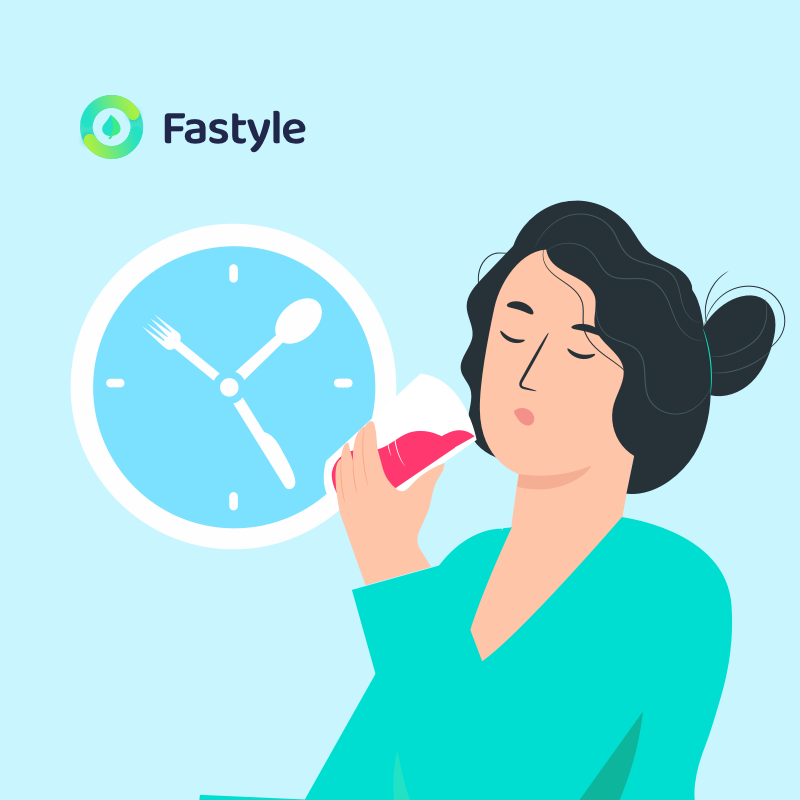Alcohol has played an influential role in the culture of celebration, social occasions, and modern health issues. Many Fastyle users have wondered whether it is safe to have a couple of drinks while intermittent fasting. In this article, I will discuss alcohol and its nutrition profile, how it may affect your health, and a guide on safe alcohol consumption while intermittent fasting.
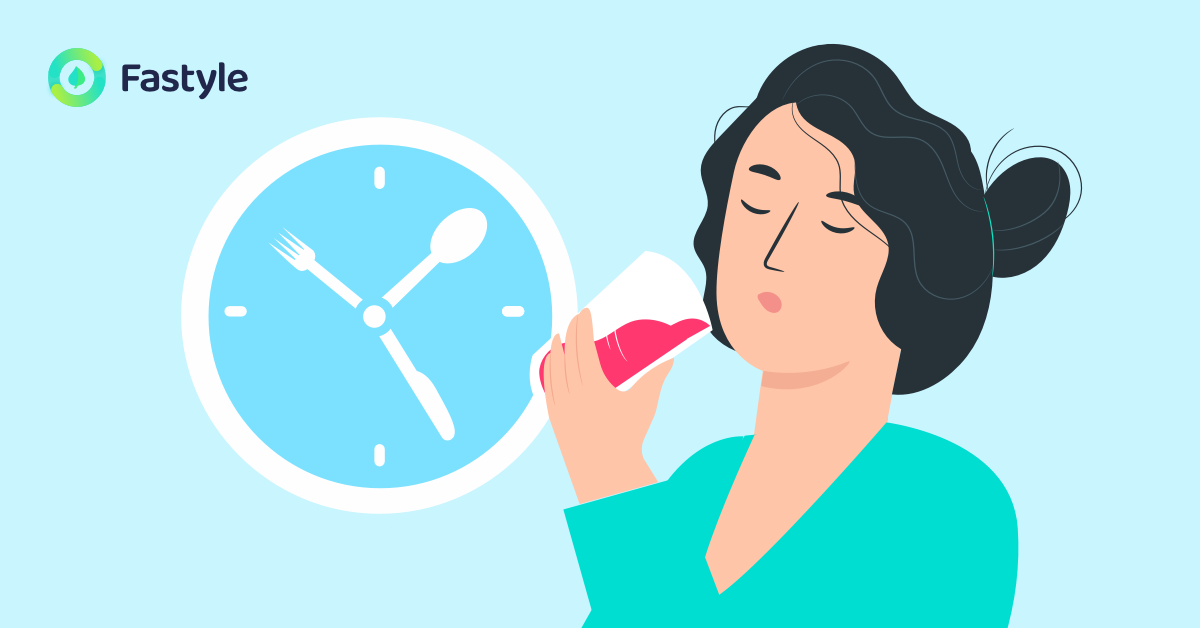
Alcoholic beverages and nutrition
Ethyl alcohol, or ethanol, is an intoxicating ingredient found in beer, wine, and liquor. Alcohol is produced by the fermentation of yeast, sugars, and starches. Common alcoholic beverages include:
- Beer
- Cider
- Wine
- Spirits & shots (vodka, whiskey, gin, rum, tequila, etc.)
- Ready to drink spirits & pre-mixed spirits
- Cocktails
- Champagne
- Japanese Sake
- Korean Soju
Alcohol is not calories free like water, black coffee, or teas. In fact, alcohol provides significant calories with 1 gram of alcohol contains 7 calories, which is almost twice more than protein and carbohydrate (1 gram = 4 calories). But unlike protein and carbohydrate foods providing essential nutrients, alcohol provides only high calories with no nutritional value.
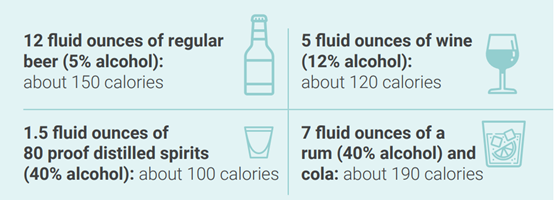
Counting standard drink
Do you know how much is a standard drink? Many people are surprised to learn how many serves of standard drinks are in their glass, can, or bottle of alcoholic beverages. Different types of beer, wine, and liquor have different amounts of alcohol with stronger drinks providing more calories.
In the United States, one “standard” drink contains roughly 14 grams of pure alcohol, which is equivalent to:
- 12 ounces/350mL of regular beer, usually about 5% alcohol
- 5 ounces/150mL of wine, typically about 12% alcohol
- 1.5 ounces/40mL of distilled spirits, about 40% alcohol
Other countries have slightly different standards. A standard drink in Australia contains 10 grams pure alcohol and a standard unit in the UK equals 8 grams of alcohol. Therefore, different countries will have their own guidelines for alcohol consumption because of the fluctuation between standard drink counting.
According to the Dietary Guidelines for Americans, adults can choose not to drink, or moderate alcohol consumption by limiting intake to 2 drinks or less in a day for men and 1 drink or less in a day for women. Drinking less or none is always better than drinking more. You may use the online calculators to help you comply with the guidelines as well as calculate standard drinks, drink size, and calories in drinks.
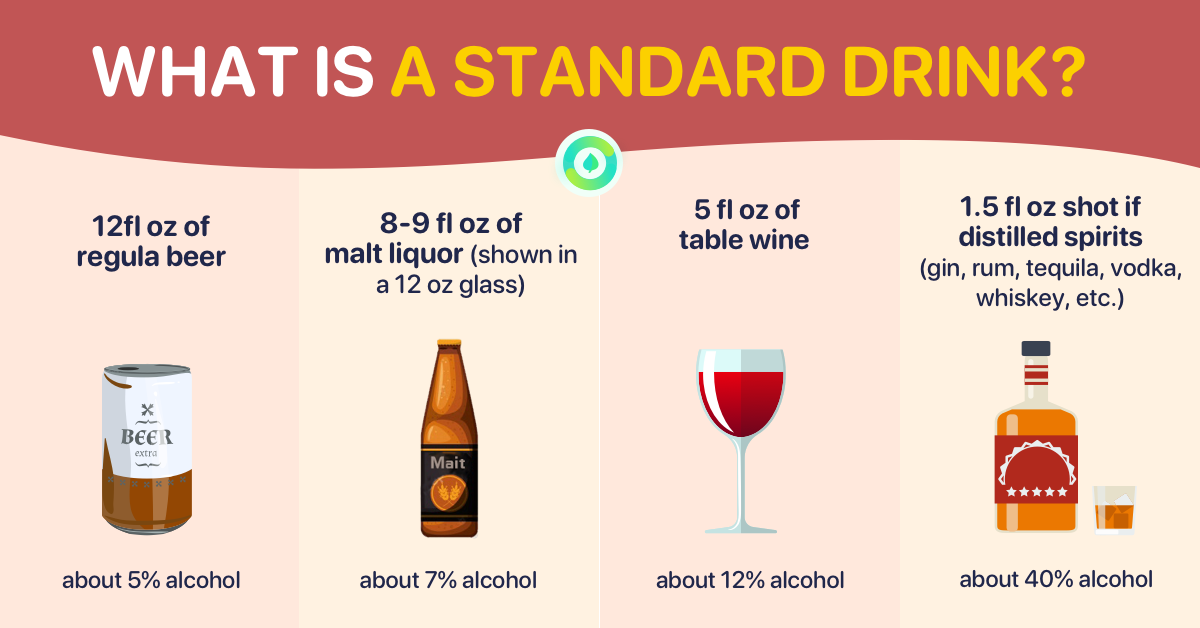
Alcohol and health consequences
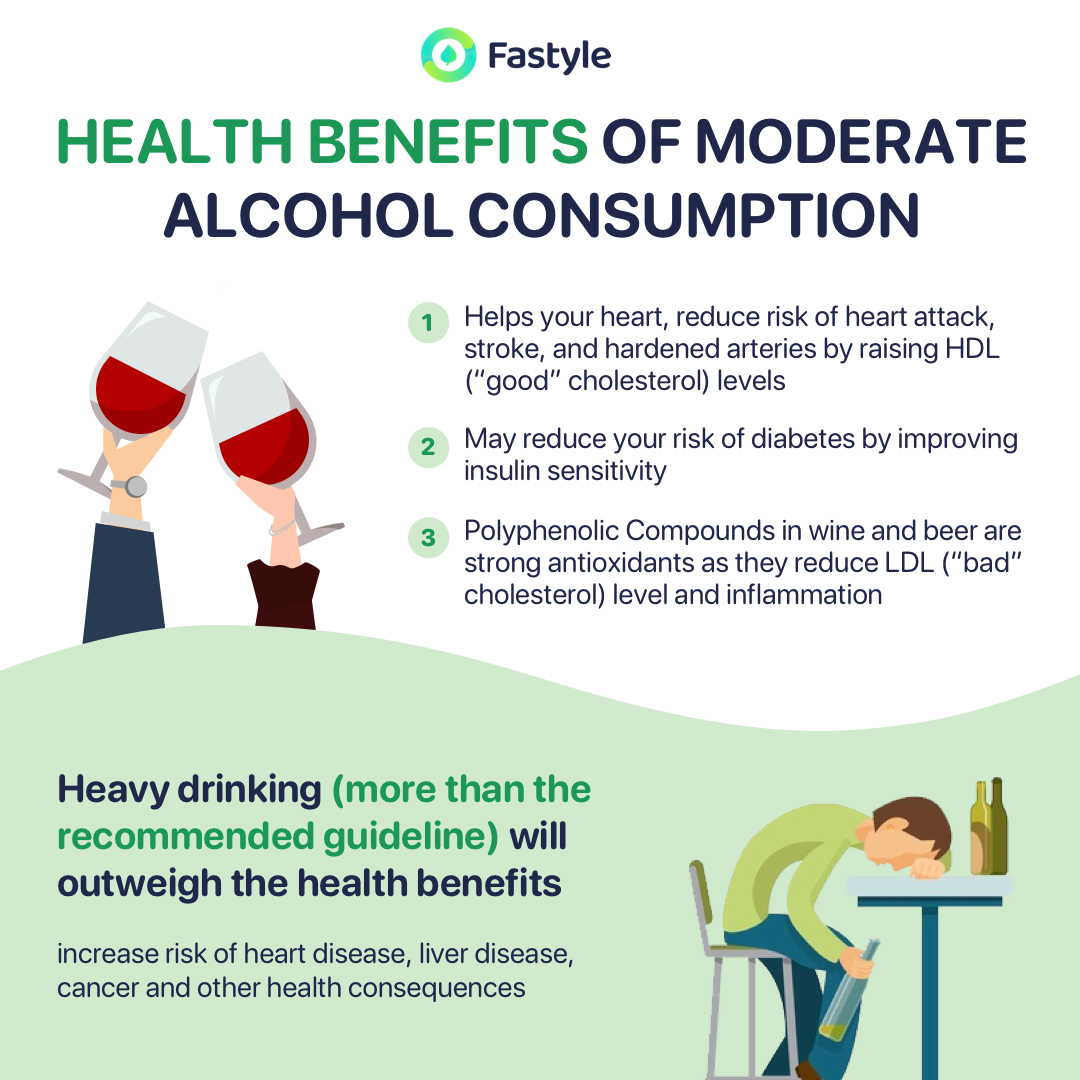
Alcohol affects every organ in the body. It is absorbed by our digestive system and enters the bloodstream. Because alcohol is recognized as a toxin by our body, it is metabolized by the liver. However, the liver cannot metabolize all of them and the excess alcohol will circulate throughout the body and act as a depressant to your brain function affecting your ability to judge, think, and concentrate. Alcohol also affects the process of digestion, storage, utilization, and excretion of nutrients and increases the risk of poor nutrition. The more alcohol is consumed, the greater impact on your nervous system and nutritional status.
There are some health benefits found associated with moderate alcohol consumption (stays within the guidelines).
- Helps your heart, reduce risk of heart attack, stroke, and hardened arteries by raising HDL (“good” cholesterol) levels.
- May reduce your risk of diabetes by improving insulin sensitivity.
- Polyphenolic Compounds in wine and beer are strong antioxidants as they reduce LDL (“bad” cholesterol) level and inflammation.
- Heavy drinking (more than the recommended guideline) will outweigh the health benefits, increase risk of heart disease, liver disease, cancer and other health consequences.
Long-term excessive alcohol consumption is linked to numerous health issues, including:
- Overweight and obesity
- Malnutrition and nutrient deficiency.
- Chronic diseases such as fatty liver, liver cirrhosis, pancreatitis, high blood pressure
- Certain cancer, including liver, mouth, throat, esophagus,
- Mental health disorder, such as anxiety and depression
- Impaired brain function, difficult to judge, think and concentrate.
- Alcohol use disorders
Alcoholic beverages & Intermittent Fasting
So here comes the question. Can you have alcoholic drinks while intermittent fasting? This depends on which window you’re in during intermittent fasting.
Fasting window
If you’re in your fasting window, the answer is NO. You CAN NOT have any alcoholic beverages. This is because any alcoholic drinks have significant calories which will likely break your fast. Nevertheless, drinking while fasting can accelerate alcohol absorption and the process of entering the bloodstream, results in a greater impact on your brain function and other discomforts created by alcohol.
Eating window
If you’re in your eating window, you may have alcoholic beverages in moderation. Although drinking less to none is healthier than drinking more alcohol. Alcoholic beverages play a significant role in socializing and on many other occasions. It is sometimes impossible to avoid a drink. Therefore, when you have to have alcoholic beverages during your eating window, it is best to follow the drinking guideline in moderation. Limit alcohol consumption to 2 drinks or less in a day for men and 1 drink or less in a day for women.
If your aim for doing intermittent fasting is to lose weight, having none is my best recommendation. Having alcoholic beverages will add more calories to your total daily intake, harder to achieve a calories deficit, and more difficult to lose weight.
Tips on reducing alcohol intake
- Set a drink limit, 2 drinks or less in a day for men, and 1 drink or less in a day for women.
- Have a few alcohol-free days each week.
- Delay your first drink, and drink slowly. Avoid drinking in rounds.
- Choose smaller size drinks.
- Swap to low or non-alcoholic alternatives, this can be a lower strength drink, or alcohol-free drinks.
- Vodka lima & soda
- Rum & diet coke
- Gin & tonic
- Light beer OR low carb beer
- Mojito
- Mocktails
- Soda water
- Soft drinks, juices
- Keep up with your water and food intake, keep your non-alcoholic alternatives close by.
- Keep counts on your drinks (how much is a standard drink, how many drinks have you had)?
- Don’t keep alcohol in your house, keep more non-alcoholic options at home.
- Drink only with dinner
- If you’re going out
- Make sure there’s non-alcoholic alternatives you can choose, limit your alcohol intake.
- Avoid drinking in rounds, hold that one drink longer.
- Choose to be the designated driver, it’s the best excuse to limit your drinks.
- Set a budget on how much you are going to spend on drinks.
- Choose a social location that doesn’t involve alcohol.
References:
https://www.cdc.gov/alcohol/faqs.htm
https://www.niaaa.nih.gov/alcohols-effects-health/overview-alcohol-consumption/what-standard-drink
https://www.health.gov.au/health-topics/alcohol/about-alcohol/standard-drinks-guide
https://www.nhs.uk/live-well/alcohol-support/calculating-alcohol-units/
https://www.rethinkingdrinking.niaaa.nih.gov/Tools/Calculators/Default.aspx
https://www.ncbi.nlm.nih.gov/pmc/articles/PMC3407993/pdf/nutrients-04-00759.pdf
FOLLOW US
